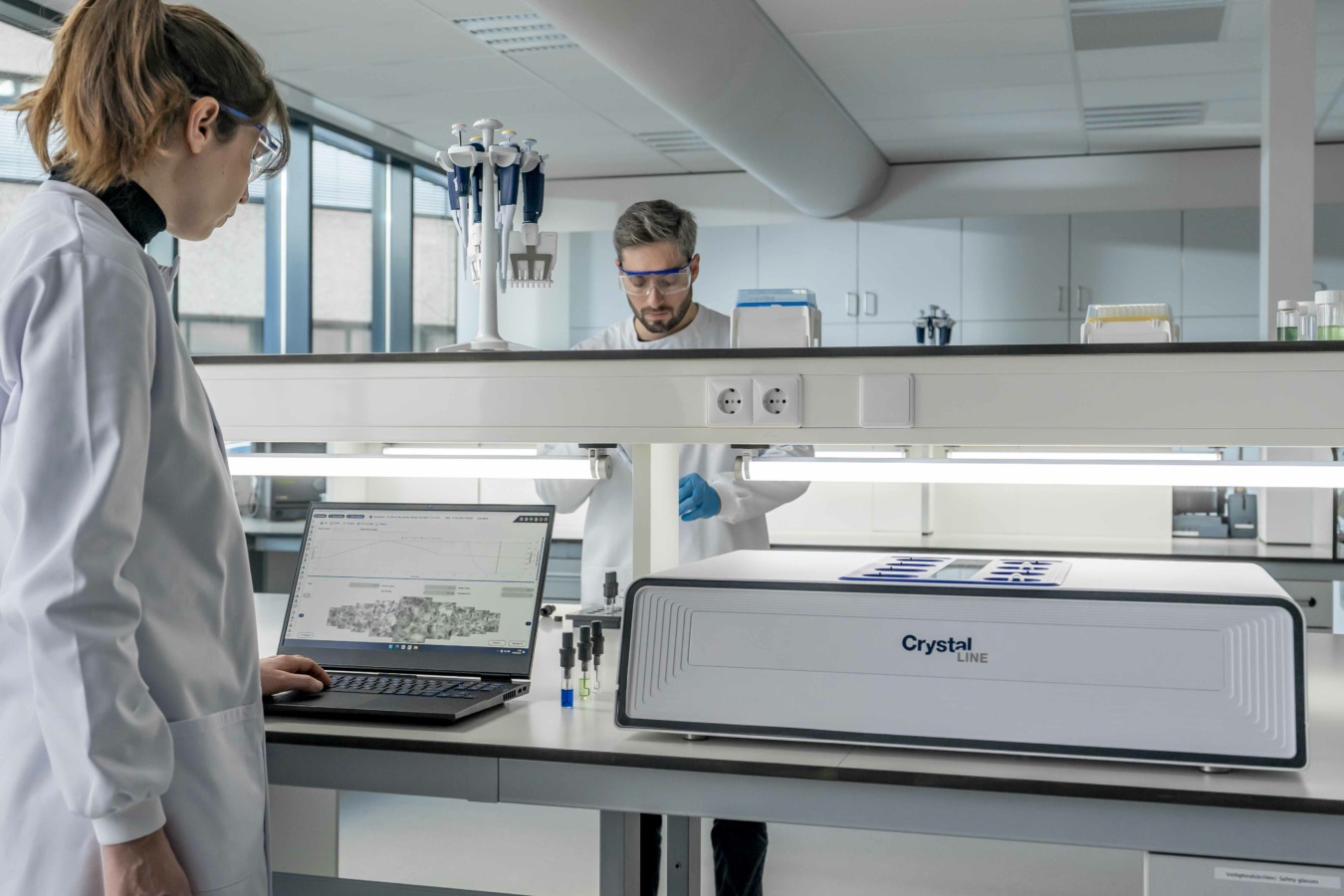Seeding is a common way of controlling crystallization, dictating when nucleation occurs by inducing secondary nucleation. The results of secondary nucleation influence the polymorphism, PSD and downstream particle properties. Therefore, a strong seeding protocol is needed in order to maximise the benefits. The Crystalline offers a unique platform for measuring secondary nucleation rates at small volume, allowing faster screening of seeding conditions at earlier stages of development to optimise seeding strategies.

Crystallization is a common process in the pharma industry in the manufacturing of solid form doses. It is a highly complex process consisting of kinetic, thermodynamic and chemical factors that compete against each other making crystallization difficult to control. Therefore, understanding the steps involved in crystallization is paramount.
Crystallization can be separated into two processes:
- Nucleation (important to control, predict and understand, as it plays a significant role in the polymorphic form, particle size distribution and downstream particle properties) and
- Crystal growth
Nucleation
Crystal nucleation is the formation of new crystalline entities from a supersaturated liquid phase and plays a large role in the final crystal size distribution and polymorphism of a compound. Nucleation can be categorized as:
- Primary crystal nucleation: can be either homogeneous - which occurs in a clear solution in the absence of crystalline material of its own kind, or heterogeneous - which occurs in the presence of impurities or foreign entities.
- Secondary nucleation: occurs as a result of the presence of crystals of the same compound in a supersaturated suspension and is typically seen after seeds are added.

Figure 1. Types of crystal nucleation.
Secondary nucleation
Secondary nucleation influences the particle size distribution of the final product and therefore affects downstream processing and particulate product quality. The Crystalline offers the ability to quantify secondary nucleation utilizing the in situ visual monitoring, particle counter and the transmissivity measurements to identify the secondary nucleation threshold within the metastable zone width (MSZW).

Figure 2. Secondary nucleation workflow.
The described workflow allows for a rational discrimination between primary and secondary nucleation events. It consists of 6 stages and starts the generation of the solubility and metastable curved using the transmissivity data collected using the Crystalline. From these curves, it is possible to determine the MSZW (stage 1) in order to define the crystallization window. Once the MSZW has been determined, several supersaturations need to be selected. The supersaturations selected must be sufficiently close to the solubility curve to avoid unwanted spontaneous primary nucleation, so secondary nucleation can be measured. Spontaneous primary nucleation can be monitored through induction time measurements.
The next step is to generate single crystals and characterize the size of the crystals and to calibrate the camera. In order to measure the secondary nucleation, the camera needs to be calibrated using polystyrene microspheres to calculate the suspension density (Np) from the number of particles on the screen (N). The secondary nucleation then can be collected at a range of supersaturations and crystal sizes to determine the secondary nucleation threshold. This threshold can be used in the industrial crystallization design process to either avoid or enhance secondary nucleation, considering that fluid dynamics in the experiments and under industrial conditions might be substantially different, possibly influencing this secondary nucleation threshold.
Case Study
Isonicotinamide is an isomer of nicotinamide and it is widely used for co-crystallization. In this study Isonicotinamide is used in ethanol and the objective is to accurately measure secondary nucleation rates while clearly distinguishing secondary and primary nucleation processes. Following the workflow outlined in the Crystalline on a 2.5-5 ml scale, it is possible to add a single seeded crystal to a clear, supersaturated and agitated solution at constant temperature whilst the number of crystals subsequently formed is monitored.

Figure 3: (Left) Nucleation rate of seeded (green) and unseeded (red) crystallization. (Right) Secondary nucleation rate with seed crystal size.
The seeded experiment shows a suspension density increase 6 minutes after the single seed crystal was added. In the unseeded experiment the suspension density raised only after 75 minutes, showing that spontaneous primary nucleation in the unseeded experiment is detected much later compared to secondary nucleation induced by the seed crystal in the seeded experiment. The suspension in the seeded experiment is therefore the result of secondary nucleation initiated by the seed crystal. Furthermore, the observed secondary nucleation rate was dependent on the seed crystal size as well, indicating that secondary nucleation is faster using larger single seed crystals.
Conclusions
A novel and reproducible single crystal seeding approach in batchwise cooling crystallization has been developed allowing the study of secondary nucleation using Crystalline. Upon seeding a well characterized single parent crystal in an accurately controlled supersaturated solution, the suspension density starts increasing after a delay time allowing the determination of the secondary nucleation rate. The developed method enables a systematic study of secondary nucleation kinetics, which improves the control on this crucial step of crystallization. This novel seeding procedure can be incorporated in crystallization workflow procedures allowing rapid development of industrial crystallization processes.
Acknowledgments
Technobis Crystallization Systems would like to thank Maria Briuglia, Jan Sefcik, Joop ter Horst from CMAC and the University of Strathclyde.
References:
- Briuglia. M, Sefcik. J, ter Horst. J; Measuring Secondary Nucleation through Single Crystal Seeding; Cryst. Growth Des. 2019, 19, 1, 421–429
Curious to learn more?
Read the full scale experiment in the application note "Secondary Nucleation through a Single Crystal Seeding Approach"